What exactly is TCP IP?
TCP/ IP( Transmission Control Process/ Internet Protocol) is a established of network methods that computers use to communicate over both the World wide web and IP systems.
TCP( Transmission Manage Protocol) is the software that pauses down computer data into tiny data packets that can be between just one and 1500 character types long. These bouts are provided with the address of the recipient and sent separately on the big data journey. At the obtaining point, TCP reassembles the bouts in the proper order. Only then can they be read by the beneficiary computer.
In actuality , however, TCP really does a much more . Deals are repeatedly lost on the way , for examplecredited to faulty mobile phone lines or other disruptions during transfer. When sending the data , TCP therefore creates a checksum. After obtaining your data , this sum is checked. If the computer detects differences, then TCP is able to close up the gaps that occurred during the transmission and replace missing data. Regarding course, this mistake correction will only work up to a certain point. If too much of the original data is lacking, it must be retransmitted. TCP can do that automatically as well .
IP( Internet Protocol) ensures that a data bundle arrives at the correct address. Each and every of the many an incredible number of computers on the Internet has a unique designation composed of four amounts or groups of numbers, all of these must be lower than 256. These types of address elements are each separated by a dot or a point . A great IP address appears this type of thing: 185. thirty- one. 22. 3
UNIX computers are least difficult to integrate into the Internet . TCP/ IP was actually developed on UNIX computers. UNIX comes with TCP/ IP motorists including all basic software or supplies a TCP/ IP extension for a surcharge. UNIX personal computers are therefore the easiest to incorporate online. Commercial UNIX systems such as ISC- UNIX or Solaris can cost up to several thousand money. An inexpensive alternate for PCs is people version of UNIX called Cpanel.
The TCP/ IP reference model
The TCP/ IP reference model, also referred to as the DoD layer model( Department of Defense level model), in evaluation to the to the OSI level model, does not define seven, but only four levels. These four levels include the system layer, internet level, transport layer and the application level
The protocols of the TCP/ IP family are active in levels 2 and 3( Internet layer and transport layer). Over they are the methods of the program layer such as SMTP( Simple Postal mail Transfer Protocol), HTTP( Hypertext Transfer Protocol) or FTP( File Transfer Protocol). They will are served by the protocols of layer 2 and 3 and are accountable for the swap of information between the various apps in an IP- based system.
Tasks and methods of the World wide web and transport level
The job of the Internet layer is to convey your data packets in the network also to forwards them to the correct nodes. The particular Internet Protocol( IP) in versions IPv4 and/ or IPv6 is mainly accountable for these duties. IP ensures the unique addressing of the participants and nodes of the network.
Each data packet has a sender and vacation spot IP address . Redirecting through the system and delivery of the data bundle to the desired recipient happens on the basis of the destination IP address . IP also defines the size of the datagrams but would not provide any special systems for controlling data transmission. Protocols such as :
ICMP( Internet Control Message Protocol) for exchanging and reporting status or error text messages
Redirecting protocols such as RIP( Routing Details Protocol), OSPF( Open Shortest Path First), BGP( Border Entrance Protocol) while others for the exchange of route information
The particular conclusion- to- conclusion cable connections from the tv- sender to the vacation spot are implemented on the transport level. The Transmission Manage Protocol any of the protocols for this task . This ensures the described establishment and disconnection of connections and offersmechanisms for circulation control. TCP inspections whether a box has actually arrived at the recipient and, if required, regulates the resending of a lost data box.
The applications of the larger layers can be addressed via so- called ports. Also, UDP operates at thetransport layer, and provides ports for use before dealing with . However, it works with no connection and does not check whether data bouts actually arrive at their destination.
